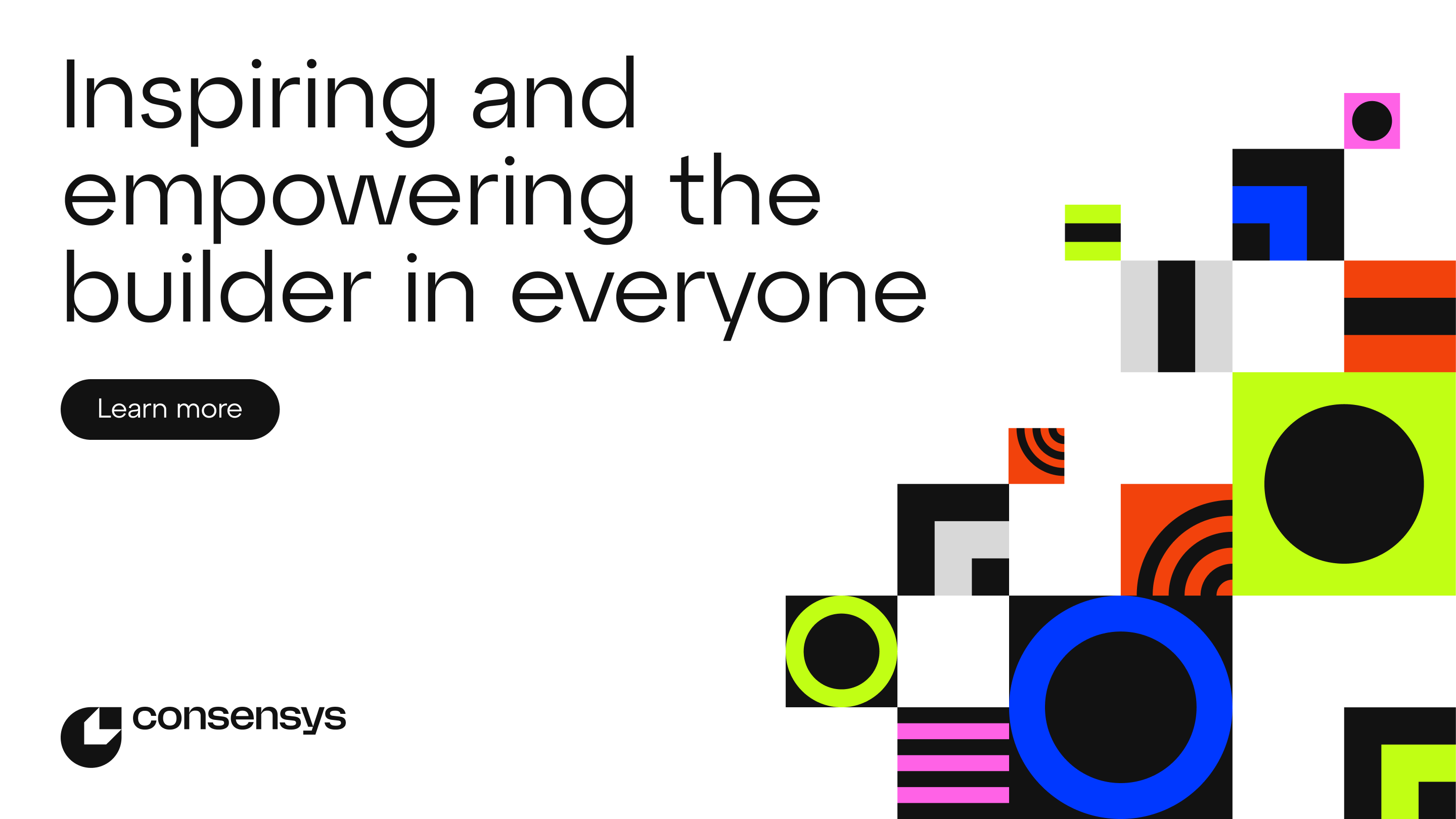
Crypto has a perception problem. A large number of people don’t know what cryptocurrencies and web3 are, or see crypto as complex and intimidating. In a recent global YouGov survey commissioned by Consensys (The Global Survey on Crypto and Web3), 43% of re…
Crypto has a perception problem. A large number of people don’t know what cryptocurrencies and web3 are, or see crypto as complex and intimidating. In a recent global YouGov survey commissioned by Consensys (The Global Survey on Crypto and Web3), 43% of respondents said they didn’t understand what cryptocurrencies were, and only 8% said they understood the concept “web3.” Meanwhile, a proportion of respondents felt they needed to have skills in financial trading (32%) or software engineering (20%) to participate in web3. These beliefs, however, are misconceptions. While the crypto and web3 ecosystem have work to do on the user interface, advanced knowledge is not required, and these misconceptions are barriers to broad adoption.
This perception problem stems largely from an overfocus on “money crypto”—buying, holding, lending, and trading tokens as investable assets. Coverage of the collapse of centralized crypto companies like FTX, ecosystem failures, and an intense interest in the rise and fall of token prices generate a lot of interest as clickbait; but what this coverage ignores is that this industry is so much more than money crypto, it comprises a rich ecosystem of protocols, organizations and individuals building groundbreaking new technology and software. The rest of this industry is what we mean when we say tech crypto. Tech crypto is about advancing open peer-to-peer networks and the software that runs on them; it’s a new kind of global public infrastructure. Tech crypto is about empowering people and building the Internet of tomorrow and is what people refer to when they use the term web3.
The perception challenge is that money crypto dominates the public discourse, clouding people’s perception of tech crypto and crowding out the discourse on web3. The negative perceptions of money crypto undercut web3’s ability to be seen as a potential solution to many of the problems people have with the current internet: social platforms that target users and sell their data, data leaks and privacy violations, difficulty participating in value generation from online activity, fragmented identity, all collectively known as web 2.0.
Is Education the Answer?
The gap in public understanding and resulting barriers to entry indicate there is a place for better education. New initiatives such as MetaMask Learn and the many Learn and Earn programs now available are examples of resources that may help to bridge the knowledge gap.
However, education isn’t the whole story. Beyond educational platforms, the crypto industry needs to play an active role in supporting crypto adoption through collaboration and community building, and by reframing its mission and how it communicates with people who are considering entering the crypto ecosystem.
The New Age of the Builder
A foundational element of web3 is the new power people have over their identities and the ease with which communities can form. Comparing the web 2.0 model to the web3 model is a bit like comparing private property with a public park. In web2, we are on private property as users of the internet, and as a result, we can have less control over how we engage with platforms, and receive negligible ownership or compensation for our contributions. Meanwhile, in web3, networks are open, public, and shared: by virtue of the different relationship between the person and the platform—through self-custody, for example—people can participate in the system by developing software, staking crypto-assets, creating or purchasing Non-Fungible Tokens (NFTs), and do so as contributors and ecosystem participants. In web3, builders have greater agency and ownership and can be better rewarded for their contributions. We see the web3 paradigm shift as introducing an age of the builder, in which people can participate in a freer, more open, and more equitable internet.
As an industry, it’s in our best interests to figure out how to tell that story, and to draw the distinction between the internet of today, and what’s possible tomorrow. We believe in this technology not because of what it can take from people, but what it can give to them.
Global Support for the Values Underlying Web3
While many don’t understand the story of tech crypto, many people are interested in the values that underlie it.
The Global Survey on Crypto and Web3 reports that when asked about concepts associated with crypto, more than one-third of those familiar with the industry expressed beliefs in its potential as the future of money (37%) and the future of digital ownership(31%), surpassing associations with speculation (25%) or scams (26%).
Meanwhile, we see the continued desire for greater ownership of data, better privacy, and increased compensation for contributions to the Internet. Half (50%) of respondents believe they add value to the internet, and 67%believe they should own the things that they make there. Only 38% of respondents believe they are adequately compensated for the value and creativity they add online. This compensation suggests that users of web 2.0 are growing aware that their data, content, and contact lists are helping build these global systems and generate substantial profits for their owners.
Consistent across the board globally, a surprising 83% of respondents said that data privacy is important to them, 70% believe that they should have a share of the profit a company makes from their data, and 79% would like to have more control over their identity on the Internet. Web 2.0 user concern about privacy and control of their data shows the clear value that web3 can provide with its emphasis on identity management and control of data.
These results point to restlessness among users of the current internet with how they are engaging with the platforms they use and suggest the transition to a builder-focused web may solve some of the problems users face.
The Infrastructure is ready: We need killer apps
A valuable goal for Consensys—and the web3 ecosystem generally—is to provide the tools, infrastructure, and support for communities to build and thrive. The tools and infrastructure are ready for those killer apps that will define the internet’s next generation. Part of what’s so exciting about our space is that the opportunity is here to build them.
As we continue to develop this ecosystem, we need to double down on the collaboration and decentralization at the heart of this industry, differentiate ourselves from web 2.0, and focus on what we can give people: the tools to help them build and belong in the world they want to see.
- SEO Powered Content & PR Distribution. Get Amplified Today.
- PlatoData.Network Vertical Generative Ai. Empower Yourself. Access Here.
- PlatoAiStream. Web3 Intelligence. Knowledge Amplified. Access Here.
- PlatoESG. Automotive / EVs, Carbon, CleanTech, Energy, Environment, Solar, Waste Management. Access Here.
- BlockOffsets. Modernizing Environmental Offset Ownership. Access Here.
- Source: https://thedefiant.io/web3-needs-paradigm-shift-from-users-to-builders
- :has
- :is
- :not
- 26%
- a
- ability
- About
- across
- active
- activity
- add
- adequately
- Adoption
- advanced
- advancing
- age
- agency
- All
- among
- an
- and
- and infrastructure
- answer
- apps
- ARE
- AS
- Assets
- associated
- associations
- At
- available
- aware
- barriers
- BE
- because
- beliefs
- believe
- BEST
- Better
- between
- Beyond
- Bit
- board
- BRIDGE
- broad
- build
- builder
- builders
- Building
- but
- by
- CAN
- centralized
- challenge
- clear
- clickbait
- collaboration
- Collapse
- collectively
- Communities
- community
- community building
- Companies
- company
- comparing
- compensated
- Compensation
- complex
- comprises
- concept
- concepts
- Concern
- ConsenSys
- considering
- contact
- content
- continue
- continued
- contributions
- contributors
- control
- coverage
- Creating
- creativity
- crypto
- Crypto adoption
- crypto companies
- Crypto ecosystem
- Crypto Industry
- crypto-assets
- cryptocurrencies
- Current
- data
- data privacy
- Decentralization
- desire
- develop
- developing
- different
- differentiate
- Difficulty
- digital
- distinction
- do
- dominates
- Dont
- double
- down
- draw
- earn
- ease
- ecosystem
- Education
- educational
- element
- emphasis
- empowering
- engage
- engaging
- Engineering
- entering
- entry
- equitable
- examples
- exciting
- expressed
- Face
- Fall
- familiar
- Figure
- financial
- Focus
- For
- form
- fragmented
- from
- FTX
- future
- Future of Money
- gap
- generate
- generation
- Give
- Global
- Globally
- goal
- greater
- groundbreaking
- Growing
- Half
- Have
- Heart
- help
- helping
- here
- holding
- How
- How To
- However
- http
- HTTPS
- identities
- Identity
- identity management
- important
- in
- increased
- indicate
- individuals
- industry
- Infrastructure
- initiatives
- interest
- interested
- interests
- Interface
- Internet
- intimidating
- introducing
- IT
- ITS
- Kind
- Know
- knowledge
- known
- large
- largely
- Leaks
- LEARN
- lending
- less
- like
- Lists
- Lot
- make
- MAKES
- management
- Management and control
- many
- many people
- May..
- mean
- Meanwhile
- MetaMask
- misconceptions
- Mission
- model
- money
- more
- much
- Need
- needed
- needs
- negative
- networks
- New
- next
- NFTs
- now
- number
- of
- on
- One-third
- online
- only
- open
- Opportunity
- or
- organizations
- our
- ourselves
- out
- over
- own
- owners
- ownership
- paradigm
- Park
- part
- participants
- participate
- participating
- peer to peer
- People
- people’s
- perception
- person
- Place
- Platforms
- plato
- Plato Data Intelligence
- PlatoData
- Play
- Point
- possible
- potential
- power
- Prices
- privacy
- private
- Problem
- problems
- Profit
- profits
- Programs
- property
- proportion
- protocols
- provide
- public
- purchasing
- RE
- ready
- receive
- recent
- relationship
- required
- Resources
- respondents
- REST
- result
- resulting
- Results
- rewarded
- Rich
- Rise
- Role
- Said
- say
- scams
- see
- seen
- Self Custody
- sell
- Share
- shared
- shift
- should
- Shows
- skills
- So
- Social
- social platforms
- Software
- software engineering
- solution
- SOLVE
- some
- Space
- speculation
- Staking
- stems
- Story
- substantial
- such
- suggest
- Suggests
- support
- Supporting
- surprising
- Survey
- system
- Systems
- Take
- Target
- tech
- Technology
- tell
- term
- than
- that
- The
- The Future
- the world
- their
- Them
- There.
- These
- they
- things
- this
- those
- Thrive
- Through
- to
- today
- token
- Tokens
- tomorrow
- tools
- Trading
- transition
- Underlie
- underlying
- understand
- understanding
- understood
- use
- User
- User Interface
- users
- Valuable
- value
- Values
- Violations
- want
- we
- web
- Web 2
- Web 2.0
- Web2
- Web3
- Web3 Ecosystem
- Web3’s
- were
- What
- when
- which
- while
- WHO
- whole
- will
- with
- Work
- world
- would
- zephyrnet











